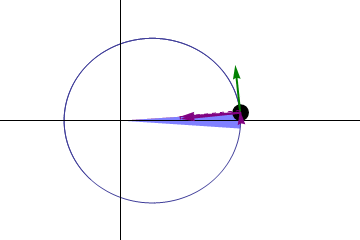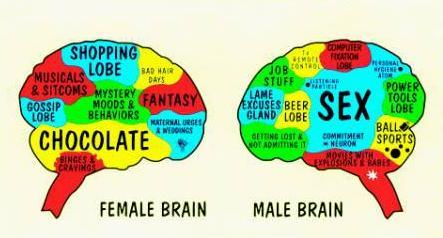I am a first year physics and astronomy student at the University of Glasgow. I'll be blogging about my day-to-day life as well as posting my revision notes and other things I find useful or interesting. Feel free to ask me about any physics-related questions you have.
Don't wanna be here? Send us removal request.
Photo



Jewel Box Sun!
This is a composite of the sun viewed through different wavelengths.
Science can be quite beautiful,
4K notes
·
View notes
Text
Back again
I should know better than to claim my next posts will arrive more quickly; it's just tempting fate.
It'd take quite a bit to catch up on the past... month and a half, apparently, so instead I'll just provide something of an interesting happening.
I don't think I've mentioned it yet, but one day a lecturer pulled down a whiteboard for more writing space and found that someone had drawn a duck on it. He left it alone (having added a "QUACK" to it), as did the next lecturer, who in fact drew a box around it to prevent it getting taken off accidentally.
That duck stayed there for the best part of a month, and in fact made one of my astronomy profs look very distressed when he managed to inadvertently wipe off one of its feet, which he hurriedly redrew.
It got to the point that the duck would get dressed up, which I remember mostly as it having a cowboy hat and boots.
Until the fiftieth anniversary of Doctor Who came around.
Bow tie, fez, tiny TARDIS and Dalek duck - if it wasn't already obvious that there were Whovians in the building, that would've been quite the giveaway.
(Incidentally, I'm told the same prof who first spotted the duck stopped midway through a lecture to put the trailer for the fiftieth on. I knew I should've gone to the later one.)
1 note
·
View note
Text
Hypotheticals
One of the reasons I'm studying physics is simply because I find the applications fascinating.
Granted, at my level, the sort of experiments I'm carrying out are more to the tune of "roll this ball down a slope" rather than anything especially exciting, but the theory we're covering is far more advanced, if highly unsafe to let a load of undergrad students play around with, assuming it's even physically possible for us to do so.
Purely theoretical experiments, though, can also be profoundly entertaining. If you don't believe me, allow me to introduce you to a wonderful site.
Have you ever wondered what humanity's fate would be if a robot apocalypse happened? Whether you could build a jetpack out of machine guns? What alien astronomers would see if they looked at the Earth right now? What would happen if you took a rowboat out on lakes of mercury, bromine, tungsten, nitrogen or helium?
If you have wondered these exact things in the past, I commend your curiosity. If you haven't, but you'd like to know now, check it out.
My personal favourite, incidentally, is probably this one. Anything that contains the sentence, "Under those circumstances, it turns out Earth still catches fire" has my approval by default.
0 notes
Photo

Physicists Find Black Holes in Globular Star Clusters, Upsetting 40 Years of Theory
A team of researchers that discovered the first examples of black holes in globular star clusters in our own galaxy, upsetting 40 years of theories against their possible existence.
The team detected the existence of the black holes by using an array of radio telescopes to pick up a certain type of radio frequency released by these black holes as they eat a star next to them.
Read More.
96 notes
·
View notes
Photo

4-D Printing Means Building Things That BuildThemselves
“The advent of 3-D printing brought on a number of innovations worthy of news coverage. Printers have created prosthetic hands, action figures, food, even blood vessels, simply by depositing layer after layer of different kinds of ink.
Now a handful of engineers around the world are trying to push the boundaries one step further — by printing objects that can build themselves.”
(via NPR)
274 notes
·
View notes
Text
Catchup
Well, that was a rather long break.
I won't bother making excuses, as it seems rather like... well, making excuses, really. I will, though, say that my absence was helped along thoroughly by my internet connection catching a bad case of total unreliability - it flickers in and out periodically, which is very good news for my online coursework.
Anyway.
First, an interesting sight on my walk from the subway to the university - someone walking in front of me, a fabric guitar case on his back and a black glove attached to the very top of the case. I suppose that's one way of ensuring nobody who steals your instrument'll go unnoticed.
In the time since I last posted, I came to realise why studying astronomy in Scotland is a profoundly bad idea.
Not because there's anything wrong with the teaching, that is; no, it's an issue with the labs. Specifically, they are largely held outdoors. Glasgow, the internet informs me, averages out at something between 200 and 250 days per year when it rains.
I think you can guess where this is going.
Despite getting our lab books thoroughly dripped on, though, we managed to calculate our latitude to within half a degree. Our longitude, granted, put us somewhere in the Irish Sea, but let's not quibble over that.
The physics labs, on the other hand, while dry, tend to be a bit... low-tech, at times. For example, our most recent one involved that most advanced of gadgets, a kettle. I'm still holding out for a swivel-chair-based one, but I suspect that'd be too fun to be allowable.
Hopefully I can get back into the swing of this now, but for the moment I'll leave it here, as I have yet another workshop tomorrow and really ought to get some sleep.
More to come soon.
-CC
0 notes
Link
84 notes
·
View notes
Photo



867 notes
·
View notes
Photo


October 15th is the Ada Lovelace Day, an annual celebration of the achievements of women in science and technology.
Ada Lovelace (10 December 1815 – 27 November 1852), often described as the world’s first computer programmer, showed a keen interest in mathematical studies from an early age and was taught by her mother, Annabella, who was also a gifted mathematician.
In correspondence with Charles Babbage, who was working on the ideas for a machine that is now recognised as a forerunner of the modern computer, Ada demonstrated her gift for mathematics and was described by him as “the enchantress of numbers”.
She was introduced to him by another female scientist famous in her day, the mathematician Mary Somerville, who mentored Ada during her relatively short life.
Babbage was impressed by the mathematical skills Ada possessed and invited her to translate a piece in Italian written by Luigi Menabrea describing Babbage’s ‘analytical engine’, so that it could be published in England.
Her notes include what is recognised as the first algorithm intended to be processed by a machine, while she also speculated on its future ability to create graphics and complex music.
Born in 1815, she had no relationship with her father, who died when she was eight. In 1835, she married William King, who was created Earl of Lovelace in 1838. She died in 1852 at the age of 36.
Her lasting legacy as role model for girls and young women considering careers in technology is remembered on Ada Lovelace Day, which is dedicated to the celebration of the achievements of women in science and technology. (Source: http://www.theguardian.com)
3K notes
·
View notes
Text
In which very dangerous experiments are carried out
Yesterday night I was walking home when I saw someone lying on the pavement.
Not on their front, not collapsed in the street - lying on their back, taking a photo of a pair of arches. From the angle and the lighting, I imagine it would've been quite dramatic.
And people think Glasgow's not picturesque. This guy evidently disagreed.
The first proper lab made its appearance today, and I found the chance to indulge in my favourite pastime - asking difficult questions. Specifically, ones that managed to make the student lab assistants start questioning whether they actually understood how the equation we were trying to derive worked themselves.
How I've missed things like this.
Bar managing to make everyone in a two-metre radius be incapable of explaining equations, though, it went rather well. It's like Advanced Higher all over again - "roll this down a ramp" is a totally valid experiment.
I'm still holding out for one involving swivel chairs.
1 note
·
View note
Text
Just another wild Friday night
I can safely say that yesterday I attended the most bizarre wedding I've ever been to.
Granted, this isn't really saying all that much considering I've only ever been to two, but I'd wager this was probably pretty strange even from a wedding veteran's perspective.
My uncle is sometimes prone to eccentric clothing choices. This manages to hold true even when he's getting married, evidently, as he seemed to have concluded that silver - proper metallic silver - high-top converse-esque shoes were fitting for the occasion. This isn't particularly strange for him, but it does set the tone for the occasion.
As eye-catching as those were, though, the first thing I noticed when walking in was that the walls were covered in celebrity face-masks, which people took down and tried on at random. I think I had a shot with Harrison Ford, myself, and my father's Elvis... well, the less said about that, the better.
It wasn't until about halfway through the meal (entirely vegan, bar profiteroles) that I realised that all of the balloons had mustaches on them - costume mustaches that could be removed.
I think you can see where this is going.
So, we have my extended family, wearing masks and fake mustaches and becoming steadily less sober by the minute. It is here I should mention that there were also about four kazoos, a few sets of maracas and a harmonica to each table.
The result? Cacophany.
But entertaining cacophany, at least.
I left fairly early, out of a combination of practicality and cheapness - I didn't want to end up stuck in Edinburgh overnight (as it would require buying a new ticket in the morning, and I am still missing my railcard a great deal) and my family was going back reasonably early too, and taking a taxi to the station, which I would not have to pay for if I went with them. Living on a very tight budget does have its ways of helping decision-making.
Before I left, though, I took the time to abduct some of the table decorations. While this may sound mildly kleptomaniacal, I'll reassure you now that we were informed we could all take one, as these table decorations were in fact potted herbs. Despite this, very few people showed any interest, and there was something of an excess being left behind.
So I decided to take advantage of the sitation and took three.
I now have pots of oregano, rosemary and thyme squeezed onto my windowsill, acquired at a cost of precisely zero.
I love weddings.
2 notes
·
View notes
Video
youtube
Paint-On-Speakers Slow-Motion VIDEO Takes ‘Drop The Bass’ To Whole New Level
“See what happens when you ‘drop the bass' at 2,500 frames per second.” (Jump to 1:53 to see the action.)
(via Huffington Post Science)
205 notes
·
View notes
Photo

This image displays Kepler’s second law of planetary motion.
"A line joining a planet and the Sun sweeps out equal areas during equal intervals of time" (Meaning that each triangle seen there has equal area.)
The black dot represents a planet, the point where the black lines intersect represent the sun.
The green arrow represents the planet’s velocity,
The purple arrows represents the force on the planet.
(Image source: here)
11K notes
·
View notes
Photo

217 notes
·
View notes
Text
Serious learning environment ahead
It’s once again that time of day where my laptop and the internet connection are not on speaking terms, so this is making a late appearance, having been written several hours ago.
As I’ve spent most of the week staggering around in a sleep-deprived haze, most eventful things have managed to pass me by – the highlight of the week so far has probably been Tuesday’s pizza night, during which I foisted off my culinary experimentation on unsuspecting innocents. They did seem to like it, so I suppose that’s one for the list if I ever manage to keep a kitchen stocked well enough to make that sort of thing regularly.
Today’s lectures, though, did end up having some rather nice lines.
Most of my lecturers have a sense of humour, some more obvious than the others. I wish I could properly capture it in my notes (which will be making an appearance, eventually – I know I keep saying that, but now all I’ll say is just to imagine a big COMING SOON sticker), but mostly the asides aren’t really practical to fit in.
Today was an exception.
I’ll start with maths, since that’s a shorter one. Logarithms are not something I’m all that fond of, but they did make an appearance today, along with the fun that is e. After trying to get us to define it for a while, my lecturer gave up and defined it for us, noting that it’s transcendental. Looking around to what was doubtless a sea of mostly-uncertain faces, he then proceeded to explain what a transcendental number is.
That explanation contained the phrase “another step worse than irrational”.
Nice to be reassured that you don’t need to worry about coursework, isn’t it?
The second incident is from one of the usual suspects – the lecturer I have for thermal physics, who everyone I have talked to thus far seems to like. It’s quite understandable, as he does like to wisecrack about everything, and I suspect he may be the culprit of the Doctor Who spreadsheet references, as he apparently used to head the sci-fi society.
After commenting on the calorie as a unit of measurement, he advised us that the best way to lose weight is “to stop eating cake”, then glanced down at himself and admitted it hadn’t worked on him. His blame for this, though, lay on Gregg’s – he considers it their fault for having a branch within five minutes of his workplace; ditto pizza places, which are even more irresponsible for delivering direct to your door. This, he commented, was the real benefit of being a poor student – you can’t afford to keep up that sort of diet.
(It’s entirely true. That pizza night ate my budget for all of that day and half of the next.)
He paused before declaring it a healthy diet, though, amending it with drink and cigarettes; his opinion on the latter being that “you might as well just roll up a £5 note and set it on fire”. Or, in the case of e-cigarettes, a credit card.
Yes, this digression lasted long enough that I took notes on it. It was too entertaining to not do so.
0 notes
Photo


Why Are There Still So Few Women in Science?
Last summer, researchers at Yale published a study proving that physicists, chemists and biologists are likely to view a young male scientist more favorably than a woman with the same qualifications. Presented with identical summaries of the accomplishments of two imaginary applicants, professors at six major research institutions were significantly more willing to offer the man a job. If they did hire the woman, they set her salary, on average, nearly $4,000 lower than the man’s. Surprisingly, female scientists were as biased as their male counterparts.
The new study goes a long way toward providing hard evidence of a continuing bias against women in the sciences. Only one-fifth of physics Ph.D.’s in this country are awarded to women, and only about half of those women are American; of all the physics professors in the United States, only 14 percent are women. The numbers of black and Hispanic scientists are even lower; in a typical year, 13 African-Americans and 20 Latinos of either sex receive Ph.D.’s in physics. The reasons for those shortages are hardly mysterious — many minority students attend secondary schools that leave them too far behind to catch up in science, and the effects of prejudice at every stage of their education are well documented. But what could still be keeping women out of the STEM fields (“STEM” being the current shorthand for “science, technology, engineering and mathematics”), which offer so much in the way of job prospects, prestige, intellectual stimulation and income?
As one of the first two women to earn a bachelor of science degree in physics from Yale — I graduated in 1978 — this question concerns me deeply. I attended a rural public school whose few accelerated courses in physics and calculus I wasn’t allowed to take because, as my principal put it, “girls never go on in science and math.” Angry and bored, I began reading about space and time and teaching myself calculus from a book. When I arrived at Yale, I was woefully unprepared. The boys in my introductory physics class, who had taken far more rigorous math and science classes in high school, yawned as our professor sped through the material, while I grew panicked at how little I understood. The only woman in the room, I debated whether to raise my hand and expose myself to ridicule, thereby losing track of the lecture and falling further behind.
In the end, I graduated summa cum laude, Phi Beta Kappa, with honors in the major, having excelled in the department’s three-term sequence in quantum mechanics and a graduate course in gravitational physics, all while teaching myself to program Yale’s mainframe computer. But I didn’t go into physics as a career. At the end of four years, I was exhausted by all the lonely hours I spent catching up to my classmates, hiding my insecurities, struggling to do my problem sets while the boys worked in teams to finish theirs. I was tired of dressing one way to be taken seriously as a scientist while dressing another to feel feminine. And while some of the men I wanted to date weren’t put off by my major, many of them were.
Mostly, though, I didn’t go on in physics because not a single professor — not even the adviser who supervised my senior thesis — encouraged me to go to graduate school. Certain this meant I wasn’t talented enough to succeed in physics, I left the rough draft of my senior thesis outside my adviser’s door and slunk away in shame. Pained by the dream I had failed to achieve, I locked my textbooks, lab reports and problem sets in my father’s army footlocker and turned my back on physics and math forever.
Not until 2005, when Lawrence Summers, then president of Harvard, wondered aloud at a lunchtime talk why more women don’t end up holding tenured positions in the hard sciences, did I feel compelled to reopen that footlocker. I have known Summers since my teens, when he judged my high-school debate team, and he has always struck me as an admirer of smart women. When he suggested — among several other pertinent reasons — that innate disparities in scientific and mathematical aptitude at the very highest end of the spectrum might account for the paucity of tenured female faculty, I got the sense that he had asked the question because he genuinely cared about the answer. I was taken aback by his suggestion that the problem might have something to do with biological inequalities between the sexes, but as I read the heated responses to his comments, I realized that even I wasn’t sure why so many women were still giving up on physics and math before completing advanced degrees. I decided to look up my former classmates and professors, review the research on women’s performance in STEM fields and return to Yale to see what, if anything, had changed since I studied there. I wanted to understand why I had walked away from my dream, and why so many other women still walk away from theirs.
Continue reading…
“Although Americans take for granted that scientists are geeks, in other cultures a gift for math is often seen as demonstrating that a person is intuitive and creative. In 2008, the American Mathematical Society published data from a number of prestigious international competitions in an effort to track standout performers. The American competitors were almost always the children of immigrants, and very rarely female. For example, between 1959 and 2008, Bulgaria sent 21 girls to the International Mathematical Olympiad, while the U.S., from 1974, when it first entered the competition, to 2008, sent only 3; no woman even made the American team until 1998. According to the study’s authors, native-born American students of both sexes steer clear of math clubs and competitions because “only Asians and nerds” would voluntarily do math. “In other words, it is deemed uncool within the social context of U.S.A. middle and high schools to do mathematics for fun; doing so can lead to social ostracism. Consequently, gifted girls, even more so than boys, usually camouflage their mathematical talent to fit in well with their peers.” — Eileen Pollack is a professor of creative writing at the University of Michigan and author of “Breaking and Entering” and “In the Mouth.” She is at work on a book about women in the sciences.
Source: New York Times
907 notes
·
View notes
Photo


Male brain versus female brain: How do they differ?
Subtle observable differences exist between male and female brains, but how exactly these relate to differences in behaviour is unknown. Such gender variations in the brain are often exaggerated and misappropriated, not only by the mass media but also by scientists, to reinforce stereotypes and perpetuate myths. The science of sex differences has always been – and still is – fraught with controversy. Some believe that behavioural differences between men and women are mostly due to cultural influences, while others argue that sex differences are largely determined by biology. In reality, the situation is far more complex. It lies somewhere in the middle, and involves two related but independent factors, which are often confused or conflated.
One of these factors is biological sex, which is determined by chromosomes. Most people have either two X chromosomes, which makes them female, or one X and one Y chromosome, which makes them male. The other is gender, which is influenced largely by the socialization process. As we grow up, we learn society’s norms about how males and females look and act; for most people, sex and gender are matched, and so they inadvertently conform to these norms.
Men and women’s brains differ in subtle ways, and these differences are probably established in the womb, due to the effects of sex hormones, which masculinize or feminize the organ as it develops. However, we still do not understand the effects of sex hormones on the developing brain, or how the subtle differences observed between men and women’s brains are related to differences in their behaviour.
Battle of the sexes?
The most obvious difference between the brains of men and women is overall size – men’s brains are, on average, between 10 and 15 per cent larger than women’s. In one recent study, neuroscientists compared the brains of 42 men and 58 women postmortem, and found that men’s weighed an average of 1,378g (3lb), compared with 1,248g (2.75lb) for women. These size differences have been found repeatedly, but they emerge only when comparing large numbers of people, so some women’s brains are larger than the average whereas some men’s are smaller. These differences partly reflect the fact that men are generally bigger and taller than women, but they are not related to differences in intelligence.
Men and women’s brains also differ in overall composition. Male brains tend to have a slightly higher proportion of white matter, whereas those of females have a higher proportion of grey matter in most parts of the cerebral cortex. Consequently, the cortex is slightly thicker in women’s brains than in men’s and, according to several studies, is slightly more convoluted as well. There are also sex differences in the size of individual brain structures. The hippocampus, a structure involved in memory formation, is on average larger in men than in women, as is the amygdala, which is also involved in memory, as well as emotions.
Another sexual variation is found in a structure called the third interstitial nucleus of the anterior hypothalamus. The function of this tiny structure is unknown, but research from four different laboratories has repeatedly found that it is almost twice as large in males than in females. It has also been linked to sexual orientation and gender identity: one study showed that it is more than twice as large in heterosexual males than in homosexual males, where it more closely resembles that of women; another found that it is smaller in male-to-female transsexuals, and larger in female-to-male transsexuals. These studies have been criticized for their small sample sizes, and the findings have not been confirmed.
Stereotypes and myths
Numerous studies show subtle differences in male and female behaviour and in cognitive functions, too. Men tend to be more aggressive and outperform women on mental tasks involving spatial skills such as mental rotation, whereas women tend to be more empathetic and perform better on verbal memory and language tasks. Findings like these are often exaggerated to reinforce the stereotypes that women are bad at reverse parking and that they love to chat!
In some cases, individual studies purporting to show sex differences in certain tasks are misappropriated. For example, according to a tiny postmortem study published in 1982, the corpus callosum, the massive bundle of nerve fibres connecting the two brain hemispheres, is proportionally larger in women than in men. This was widely reported to mean that women are better at multitasking, even though subsequent work has failed to replicate the results. A more recent study showed that women are marginally better than men at paying attention to sounds presented to both ears simultaneously – this was interpreted by some as evidence that ‘men don’t listen’.
Many of these claims are accompanied by the assertion that the observed differences between men and women’s brains are ‘hard-wired’ and, therefore, irreversible. We now know, however, that brain structure and function change in response to experience, so any observed differences between the brains of men and women could also be due to differences in upbringing and socialization. To date, though, very little research has been done to investigate how different nurturing styles might influence brain development.
Box: The extreme male brain hypothesis
People with autism tend to perform poorly on tests of empathizing, or the ability to put oneself in somebody else’s shoes, but do well on tests of systematizing, or finding repeating patterns. Similarly, women tend to score higher on the empathy scale, and men on the systematizing scale. These observations led one researcher to propose the highly controversial ‘extreme male brain' hypothesis of autism. The hypothesis states that autism is an extreme form of the normal male cognitive profile, which occurs as a result of high testosterone levels in the womb. Accordingly, people with autism can be considered as 'hyper-systematizers' who focus more on patterns and fine details than on other people's thoughts and actions. The extreme male brain hypothesis has been used as an explanation for why autism is four times more prevalent in males than in females, and why people with autism can excel in disciplines such as maths and engineering.
943 notes
·
View notes